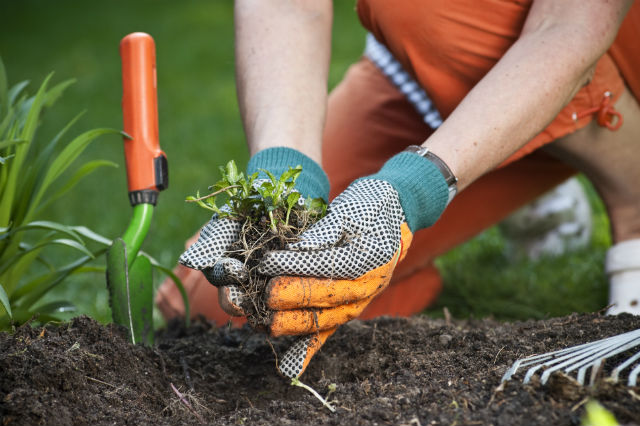Gardening is one of the most satisfying pastimes. You dig around in the dirt a little bit, apply water and then — voila! — you have vegetables, greenery, herbs and flowers. Whether it’s spring, summer or fall, flowers can brighten up your garden or landscaping. But when is the best time to plant flowers? Our Northeast flower chart can help.
One of the first things you need to know when planting flowers is your planting zone. For the uninitiated, a planting zone is a way of measuring climate differences. The zones are based on the average annual minimum temperature in that area. You can find your zone here. There are around 11 planting zones in the US. Northeast planting zones range from 3 (cold) to 7 (mild), though most of the Northeast sits comfortably between zones 5 and 6. Only the very upper regions of New York, New Hampshire, Vermont and Maine get into the 3-4 range.
Sourced from the Old Farmer’s Almanac, our flower chart marks the zones in which certain flowers flourish, and it also notes if they’re annuals or perennials. Annual flowers, like impatiens, go through their entire life cycle in one planting period. If you want impatiens every spring, you have to plant them every spring. Perennial flowers, like peonies, have a longer life cycle. With proper care, they can return and flower year after year.
An important thing to note when consulting our flower chart is that most flowers do not do well in extremes. As you look over the flower chart, you’ll notice that almost all of the flowers thrive best when planted in either spring or fall. These mild, in-between seasons are perfect for growing strong and healthy flowering plants. Everyone knows you can’t usually plant flowers in winter, but the dog days of summer can be just as bad.

Sunflowers
Sunflowers are annual flowers that flourish in zones 2-11. (Although there are some smaller perennial varieties.) It is best to plant them after the last spring frost. Sunflowers look almost like huge daisies — some of them can grow over 16 feet in height! They are hardy plants that are easy to maintain. Sunflowers bloom in summer and early fall.
Zinnias
These annual plants grow best in zones 3-10. Like sunflowers, make sure to plant them after the last spring frost, and no sooner. Zinnias are great flowers for new gardeners, since they’re easy to plant as seeds and they grow very quickly. They bloom in summer and are beloved by butterflies.
Coneflowers
Coneflowers are perennials that grow in zones 3-9. These spindly purple flowers are best when planted in spring. Coneflowers bloom from June to October, adding a vibrant pop of color to your garden for many months. Like zinnias, they also attract butterflies.
Jacob’s Ladder
This perennial plant can grow in zones 3-8, and can be planted in either spring or fall. The vibrant purple flowers can bloom from late spring to early summer, and last up to four weeks.
Shasta Daisies
Shasta daisies are perennial flowers that can grow in zones 5-8. Like Jacob’s ladder, they can be planted in spring or fall. These flowers are classics of the garden, with white petals and yellow florets. Shasta daisies bloom in spring or early summer, and sometimes even flower through fall.
Lavender
This fragrant perennial grows in zones 5-9, and should be planted in late spring. Expect the signature fragrance to hit its peak when they bloom in late spring and early summer.
Roses
Roses are perennial flowers that can grow in zones 3-10. Plant your roses in late spring or early summer. There are many different types of roses, but they usually bloom on and off from spring to fall.
Black-Eyed Susans
These perennials thrive in zones 3-9. They should be planted in late spring or early summer, when the soil temperature reaches 70 degrees. Black-eyed susans brighten up any garden when they bloom throughout the summer.
Big-Leaf Hydrangeas
Big-leaf hydrangeas are perennial and they grow in zones 5-7. They can be planted in either spring or fall. Big-leaf hydrangeas are fascinating flowers that grow in an array of rich colors depending on the pH level of the soil. My hydrangeas blooms in shades of blue, purple and pink, so I truly have no idea what’s going on in my dirt. They bloom from mid-spring to early fall.
Tulips
Tulips are technically perennial, but generations of hybridization and human meddling has weakened their ability to come back year after year. Most gardeners treat them as annuals. Tulips can grow in zones 4-8. They should be planted in the fall, about 6-8 weeks before hard frost sets in. Tulips come in many varieties, but they usually bloom in spring.
Peonies
Peonies are perennial flowers that do best in zones 3-8. They are best planted from late September to early October, about six weeks before the ground freezes. These fat, fragrant blossoms flourish when planted in an area with direct sunlight. Once established, peony bushes are hardy plants with vast root systems. They bloom in late spring and early summer.
Get more tips for landscaping and gardening in the Northeast.
What are your favorite gardening flowers? Let us know in the comments below!
This article has been updated and republished from a previous version.
16 Thoughts on “Our Northeast Flower Chart Shows You When to Plant”
Leave A Comment
Comments are subject to moderation and may or may not be published at the editor’s discretion. Only comments that are relevant to the article and add value to the Your AAA community will be considered. Comments may be edited for clarity and length.













I love all types of flowers. I had them in my garden. Once established and cared for, they grow easily, come back year after year and make the garden look beautiful.
Sounds helpful
It’s best to sow seeds when the soil is warm and moist and the weather is not rainy or windy. Moreover, seeding should take place in the morning to provide plants with sunlight. Generally, the flower planting schedule begins in spring or fall and revolves around the frost dates.
I live in Ohio right outside my front door there’s a He’ll with Rocky soil I’d like to plant some color on it do you have any suggestions or it’s on the north side of my home
I planted several Blue Salvia perennials and they look gorgeous throughout the summer. Mixed with Marigolds to keep mosquitoes away.
Thank you
What is the best location for Blueberry Bushes
Where is the best area for growing blueberries in
Hi Dan! Blueberries should be planted in a sunny and sheltered spot during spring in zones 5 and below. You can read more about blueberry planting in this guide from the Old Farmer’s Almanac. Happy planting!
-Sarah
Which plants keep mosquitoes away from our outdoor seating area next to our garden?
Hi Mindy, Thanks for reading Your AAA Network and great question! Check out this article from Garden Design magazine that sets out a dozen or so plants that will help keep those pesky pests away. But the quick version is, Lavender, Marigolds, Mint, Rosemary, Basil and even Catnip are known to keep mosquitos away.
What is the best time to plant grass seeds?
It is best to plant grass seed from mid to late fall. If you can’t wait, spring should be fine. Thanks for reading!
– Sarah
You can’t go wrong purchasing 40 lbs. of grass seed or more for 10,000 square feet. The area you plan to seed should have visual dirt showing and it doesn’t need fresh top soil either. It doesn’t matter when you put it down either except you don’t want frost. My soil consist of areas of clay, sand and dirt and I have a great lawn almost every year after seeding. Some areas are shady and others are full time in the sun. I often throw so much seed down the seed cover each other. The secret is to keep the area moist. If I know it will rain for days; that is the best time to seed . Once you notice growth, there will be some bald areas. Again, I seed those bald areas. I wait for more growth and reseed as necessary. If I have extra seeds, I just spread by hand in my front yard for best appearance. If I feel I may have purchased too much seed, I keep the opening in the bag small so I can use heavy duty tape to reseal the bag for next time. I prefer to use it all in one season. I did find seed is still good the following year, but I rather not take the chance. If I see a defective bag in the store, I ask for a discount and always purchase the cheapest store brand!
I love Black-Eyed Susans. Had them in my garden. Once established and cared for, they grow easily, return every year, and make the garden look beautiful.
They are true classics!
– Sarah